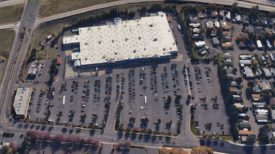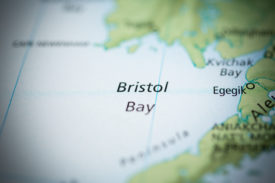This was the year of small but significant percentages: 1 percent or less. I’m speaking not only of Washington’s governor race, the Montana legislative elections, or the Ohio presidential vote tally.
I’m speaking of budding trends toward a durable way of life in Cascadia. The region reached the vicinity of 1 percent on a number of heartening, if incipient, measures during the past twelve months.
- In British Columbia’s Fraser Basin-the heart of agriculture in western Canada-there are now almost 100 certified organic farms, as the Fraser Basin Council reports (pdf, page 5). That’s 1 percent of all basin farms. Organic isn’t the alpha and omega of environmental responsibility (as I’ve been saying), but it’s something.
- The area of Cascadia’s forestland managed under the standards of the Forest Stewardship Council has risen steeply since the late 1990s. It hit 1.8 million acres in 2004 after the announcement of Potlatch’s certifying its Idaho lands. That’s roughly 1 percent of the region’s forestland.
- The green building movement surged in 2004, drawing a lot of media attention along the way. The number of LEED-certified green buildings doubled to 30 in the region during 2004. An additional 214 buildings under construction have applied for registration with the US Green Building Council. The trend is sharply up, as the chart displays. Altogether, applicants and certified buildings come to about 20 million square feet of indoor space. Reliable figures on total buildings (thousands!) under construction are hard to come by, but my guesstimate suggests the LEED segment is at least in the ballpark of 1 percent of new construction. And LEED has yet to issue guidelines for the vast residential building market.

- Wind power now provides about 1 percent of electricity in the Northwest states. Virtually all this power has come online since 2000.
- The region’s (mostly new) voluntary green power purchasing programs are growing nicely: they recently saturated 1 percent of the market in the central Puget Sound region, as Clark noted recently.
- Hybrids, especially the Toyota Prius, are hot commodities, moving so fast from dealers’ lots that waiting lists run to months. They remain a tiny fraction of the region’s fleet, but I bet they’ve exceeded the 1 percent mark, as a share of new vehicles sold.
Getting to 1 percent may seem disappointingly little, but the diffusion of innovations-whether new products, business practices, or habits-typically follows a bell-shaped curve (discussed here and here).
In less arcane terms, that means the next step after 1 percent may not be 2 percent but 10 percent. So let’s hope 2005 is the year of 10 percent.








